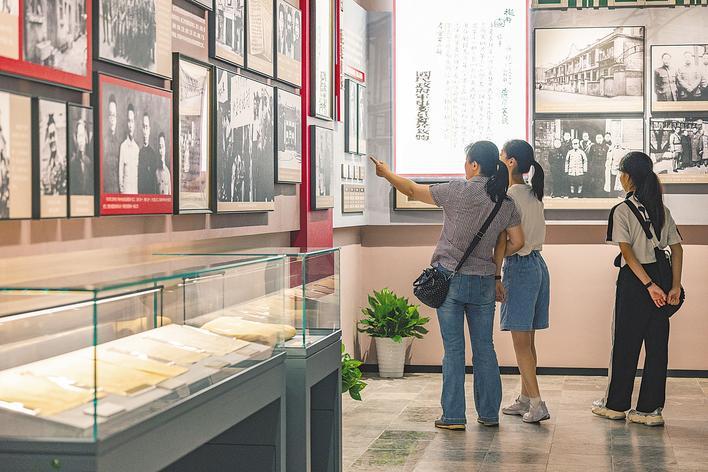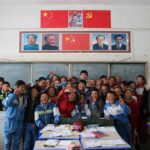On August 25, the Memorial Museum of the Former Site of the Eighth Route Army Wuhan Office launched a new exhibition titled “Heroic City, Flames of Resistance: Special Exhibition on Wuhan’s War of Resistance History” in its permanent exhibition hall on the first floor, commemorating the 80th anniversary of the victory of the Chinese People’s War of Resistance Against Japanese Aggression and the World Anti-Fascist War.
“Wuhan has always been a city flowing with heroic blood and bearing the mission of the times. From the ‘united as one, standing together’ spirit of 1938 to today’s call to ‘build a pivotal point and lead as a dragon head,’ the city’s spirit forged in the flames of resistance is always worth remembering and cherishing.” On August 25, the Memorial Museum of the Former Site of the Eighth Route Army Wuhan Office unveiled its newly created permanent exhibition “Heroic City, Flames of Resistance: Special Exhibition on Wuhan’s War of Resistance History.”
The exhibition is divided into four sections: “Answering the Call of the Nation,” “The Mainstay of Resistance,” “The Great River’s Surging Waves,” and “Resistance Behind Enemy Lines.” It uses artifacts, reconstructed scenes, and multimedia interactions to vividly present the flames of war, attracting a large number of visitors.
“This exhibition is the first major update to the permanent exhibition in ten years. It adheres to a correct historical perspective, highlights the central role of the Communist Party of China, and showcases the historical significance of ‘Greater Wuhan in 1938.'” The exhibition clearly demonstrates with indisputable historical facts that the Communist Party of China was the most resolute in defending national independence, the most determined in safeguarding national interests, and the most courageous in resisting foreign aggression.
After viewing the exhibition, a provincial Party history expert stated that in 1938, Wuhan was the de facto wartime capital, the center of the national anti-Japanese salvation movement, one of the key cities where the Communist Party of China maintained the anti-Japanese united front, and a focus of global attention. The exhibition highlights regional characteristics and uses physical evidence to showcase the work done by the CPC Central Committee’s Yangtze River Bureau and the Eighth Route Army Wuhan Office in Wuhan.
The exhibition delves into the museum’s collection, revitalizing its “inventory,” with many previously unseen historical materials and artifacts being displayed for the first time. A docent explained: “The note written by Dong Biwu in 1938, copied by Qian Yuanjing, recommending him to study at the Anti-Japanese Military and Political University, is vivid proof that the Wuhan Office served as a red hub sending patriotic youth to Yan’an.” “Performance song lists and commemorative badges from the Children’s Drama Troupe during the war, the original manuscript of ‘Wartime Lullaby’ composed by Xian Xinghai in Wuhan in 1937, and the song list for ‘Sea Star Choir Team Song’ (carbon copy version) are all being exhibited for the first time.”
In the exhibition hall, Chen De, nephew of anti-Japanese martyr Chen Huaimin, was deeply moved to see the leather suitcase his uncle used at the Jianqiao Aviation School. This relic, witnessing Chen Huaimin’s heroic youth, is being displayed for the first time since being donated to the museum by Chen De.
The exhibition skillfully uses multimedia technology to present scenes such as the “Wuhan Donation Movement,” “War Resistance Expansion Propaganda Week,” “Life Bookstore,” and the “Battle of Zhu Rui Mountain.” Features like “exhibition within an exhibition,” calligraphy displays, pull-out devices, and interactive check-ins enhance the immersive experience for visitors. Young reporters from a modern youth publication transformed into “witnesses of time,” experiencing it firsthand and remarking that they were “deeply educated” and that “history felt more vivid.”
It is reported that this exhibition has been selected for the list of thematic exhibitions recommended to commemorate the 80th anniversary of the victory of the Chinese People’s War of Resistance Against Japanese Aggression and the World Anti-Fascist War.




